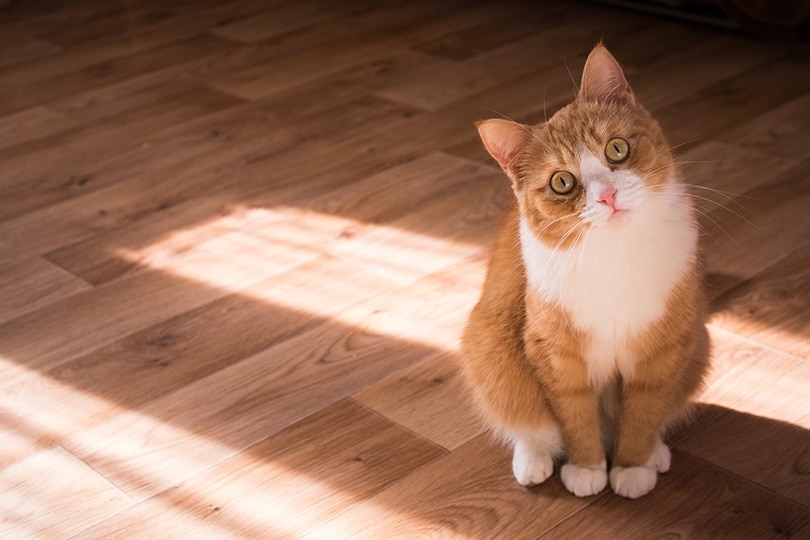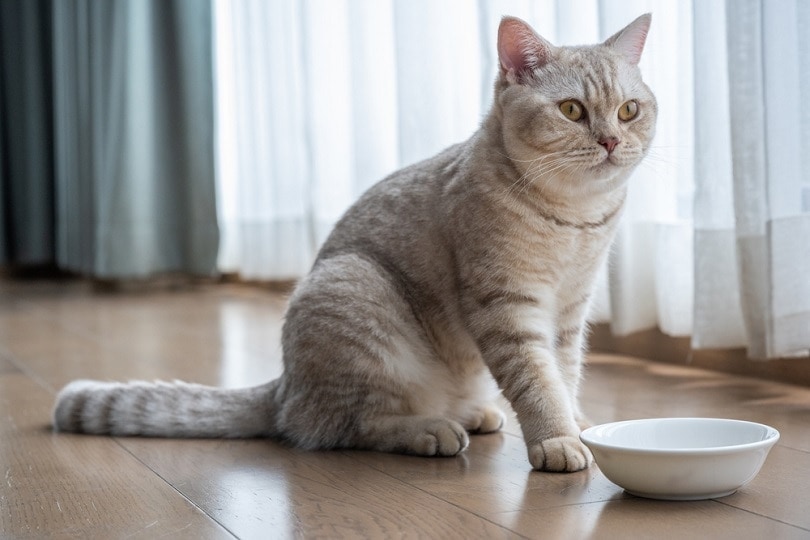Why Do Some Cats Have an M On Their Forehead? Markings Explained

Updated on

Cats come in a variety of breeds and colors with different markings. You may see cats with patterns, stripes, spots, white socks, or other distinctive markings, but there are consistencies in the patterns.
For example, most cats have the shadow of an “M” on their forehead, right above their eyes. While no one knows exactly why cats have this coat pattern, cats aren’t the only animals that have this. If you want to learn more about cat coat patterns, this article is for you!
Cat Markings
Cat coloration and markings are defined by genes and appear before the hair develops. Even wild cats, like jaguars, leopards, and tigers, have defined stripe or spot patterns.
Tabby coat patterns are among the most common throughout cat breeds, but cats can differ in color patterns, from white and cream to black, brown, or gray. The forehead M is a standard aspect of tabby patterns, but it may be more apparent than others on specific coats and patterns.

Legends of the Forehead M
The tabby’s forehead M is prominent in folklore and shows up in various mythologies. Here are some of the known legends:
- Mau: In Ancient Egypt, cats were called Mau because of the sound they make when they vocalize.
- Mary: In Christianity, a tabby cat snuggled with baby Jesus in the manger to keep him warm. Mary showed her gratitude by stroking the cat’s head, leaving an M behind.
- Mohammed: The Prophet Mohammed loved cats, and according to Islamic legend, Mohammed had a cat named Muezza. The cat often slept on the sleeve of his robe. When Mohammed needed to put on his robe for prayers, rather than disturb Muezza, he cut the sleeve off his robe so the cat could continue to sleep. It’s believed that the M stands for Mohammed, protector of cats.
- Mother: Jim Willis, a writer and animal advocate, wrote a story called “Beloved of Bast.” This story is about a cat named Mother who is visited by Bast, the pet cat of the sun god Ra. Because of this, all cats have the letter M on their foreheads.
Animal Patterns
Based on biological research, animals may develop patterns for mating, to warn off predators, or to defend themselves. For example, a tiger’s stripes may help it blend into the surrounding environment and ambush prey. A peacock’s eyespot feathers create the look of many eyes, which scare off predators.
We may quickly assume a zebra’s stripes are for camouflage, but they don’t blend into the environment. In fact, a recent study revealed that zebra stripes may have evolved to disrupt the flight patterns of flies. Horses and zebras respond to flies very differently because of the threat of African fly species and disease.
According to the study, flies have no problem with stripes from a distance, but they fly past or bump into them up close. This may indicate that stripes disrupt the fly’s ability to land safely on zebras. It’s possible this is because their low-resolution eyes can’t interpret stripes effectively.
Despite thousands of years of evolution and numerous genetic variations, the tabby pattern is always expressed in domestic cats. It’s possible that we may learn the reason why tabby is so common among domestic breeds and why the signature M is expressed on its forehead.

Key Takeaways
The forehead M is a common marking for tabby cats and other types of cat patterns, but we don’t know the reason why. It’s possible that it’s a defense mechanism or provides some other evolutionary advantage, but either way, it’s a beautiful addition to the tabby cat that highlights its beautiful eyes.
Related Reads:
- Can I Give My Cat Melatonin? What You Need to Know!
- Cat Respiration Rate: How Many Breaths Per Minute is Normal?
Featured Image Credit: pklaschka, Pixabay









